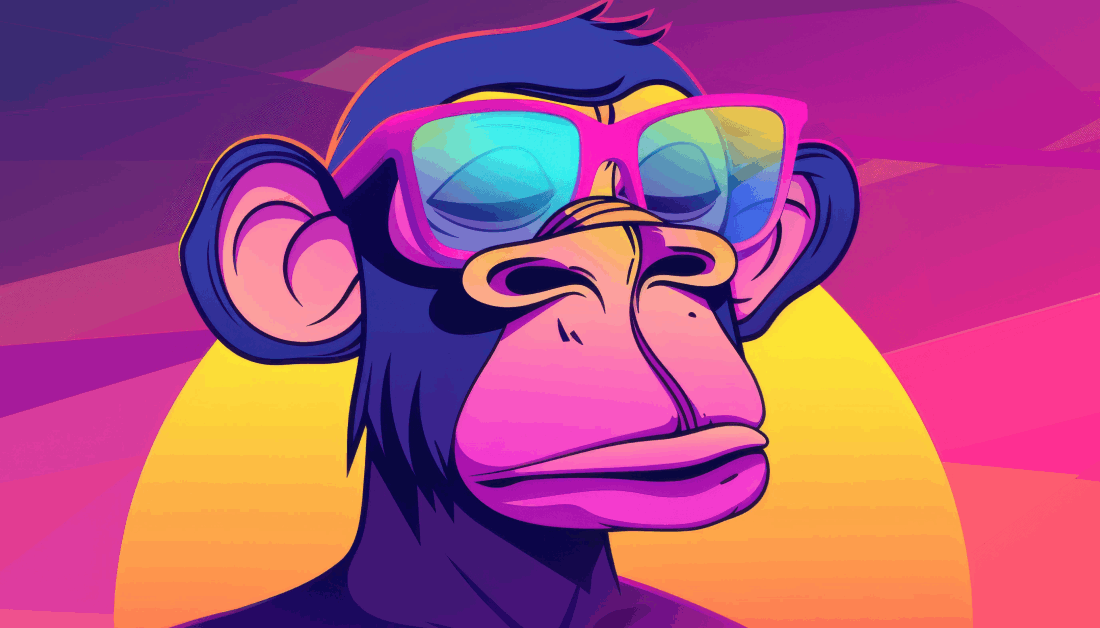
NFTs have evolved from collectible digital assets into versatile, functional tools, with AI now accelerating their integration across various sectors. This transformation reflects the blockchain industry’s shift toward decentralization and token-based economies, where NFTs represent verifiable ownership and customizable digital assets. Through AI, NFTs are beginning to evolve as smart, responsive assets that offer more than speculative value and bring decentralized trust to industries like finance, gaming, digital property, and real-world asset management.
Gaming and NFTs: Advanced Player Economies and AI-Driven Customization
In gaming, NFTs serve as programmable assets that can be customized, traded, and valued across multiple platforms, pushing the boundaries of in-game economies. AI’s integration into NFTs introduces a new layer of adaptability, allowing assets to interact based on user data, player behavior, or even broader economic factors. This capability has evolved NFTs from static collectibles into complex assets that serve as digital representations of both in-game achievements and economic value. By creating NFTs that respond to player preferences, AI enables a future where in-game items could adapt to different gaming environments, facilitating cross-platform functionality and enhancing the interoperability essential for robust virtual economies.
Intellectual Property: Redefining Ownership and Rights Management
In intellectual property, NFTs offer a new approach to securing and monetizing digital work, enhanced by AI for seamless authentication and distribution. Minted as NFTs, digital assets gain a transparent ledger of ownership that cannot be altered, enabling creators to safeguard their rights and enforce royalties automatically. With AI-driven authentication tools, real-time verification of originality and provenance becomes possible, which allows for enhanced security in secondary markets where artists can receive royalties upon resale.
Smart contracts with built-in AI can handle complex royalty structures and automate payments based on terms set by the creator, eliminating the need for intermediaries and streamlining the revenue model. This adds financial security to creators while ensuring their work is distributed under controlled terms. As NFTs expand in the creative industries, these features establish a marketplace where creators retain control and receive fair compensation for each transaction involving their work, promoting a decentralized yet controlled distribution of intellectual assets.

Real-World Asset Tokenization: Integrating Blockchain and AI for Liquid Markets
NFTs are bridging digital and physical realms through real-world asset tokenization, enabling fractional ownership of high-value items like real estate, fine art, or luxury assets. Tokenizing assets as NFTs democratizes access to traditionally exclusive investment markets by allowing fractional ownership, making it feasible for retail investors to buy and sell shares of physical items. Through AI, tokenized assets benefit from sophisticated valuation models and automated management systems, optimizing liquidity and transparency.
AI algorithms analyze asset performance data and apply predictive models to provide accurate real-time valuations, ensuring a balanced marketplace where tokenized assets reflect their true market worth. By streamlining the process, AI allows for easier trading, enabling investors to diversify their portfolios across digital and physical assets with increased confidence in valuation and security. This convergence of blockchain and AI is enabling a more inclusive and liquid marketplace, fundamentally transforming how tangible assets are bought, sold, and managed.
Addressing Key Challenges: Scalability, Regulation, and Interoperability
As NFTs grow in utility, the ecosystem must overcome substantial challenges to enable their widespread adoption. Scalability remains a core issue, as current blockchain systems grapple with high transaction volumes and costs. Layer-2 solutions, in conjunction with AI-driven optimization algorithms, aim to alleviate these issues by streamlining transaction processing, reducing latency, and minimizing costs for high-frequency trading. These enhancements allow NFT platforms to handle larger transaction volumes more efficiently, supporting a growing demand without compromising performance.
Regulatory clarity is equally essential for the NFT space to mature. Governments globally are assessing frameworks to protect consumers and uphold ethical standards without hindering the technology’s growth. AI plays a role here as well by supporting compliance with evolving regulations through automated monitoring and reporting. Interoperability is another crucial factor, as NFTs need to operate seamlessly across different blockchains. AI is fostering cross-chain functionality, enabling NFTs to be freely transferable between networks, enhancing accessibility and expanding the potential for NFTs to operate within a multi-chain ecosystem.

Future Trends: AI and NFTs Leading the Next Phase of Digital Ownership
AI is positioning NFTs to transcend static digital assets and become adaptive, self-managing entities capable of interacting with real-world and virtual environments. As AI and blockchain technologies converge, NFTs are expected to feature dynamic qualities, responding to market trends, external data, or user behavior in ways that enhance their relevance and functionality. This synergy opens doors for NFTs in areas like education, fashion, digital identity, and enterprise management, where asset adaptability and smart customization are essential.
In the fashion industry, NFTs could serve as digital wardrobes that respond to trends or user preferences, making them dynamic items of self-expression. In education, NFTs could provide personalized learning resources that evolve based on user progress or external developments. Similarly, digital identity management could see NFTs that adapt to an individual’s evolving credentials or professional milestones.
As NFTs continue this transition toward utility, their potential to reshape industries like gaming, asset management, and IP rights will expand, positioning them as key components within a decentralized, secure, and inclusive digital economy. This vision of AI-augmented NFTs aligns with blockchain’s broader ambition to create a transparent, autonomous, and user-controlled digital ecosystem, where both digital and physical assets can thrive within a framework of trustless ownership and governance.
This expert-level version is designed to provide an in-depth, detailed view for a knowledgeable audience, while being expanded to match the article’s intended length and complexity.



